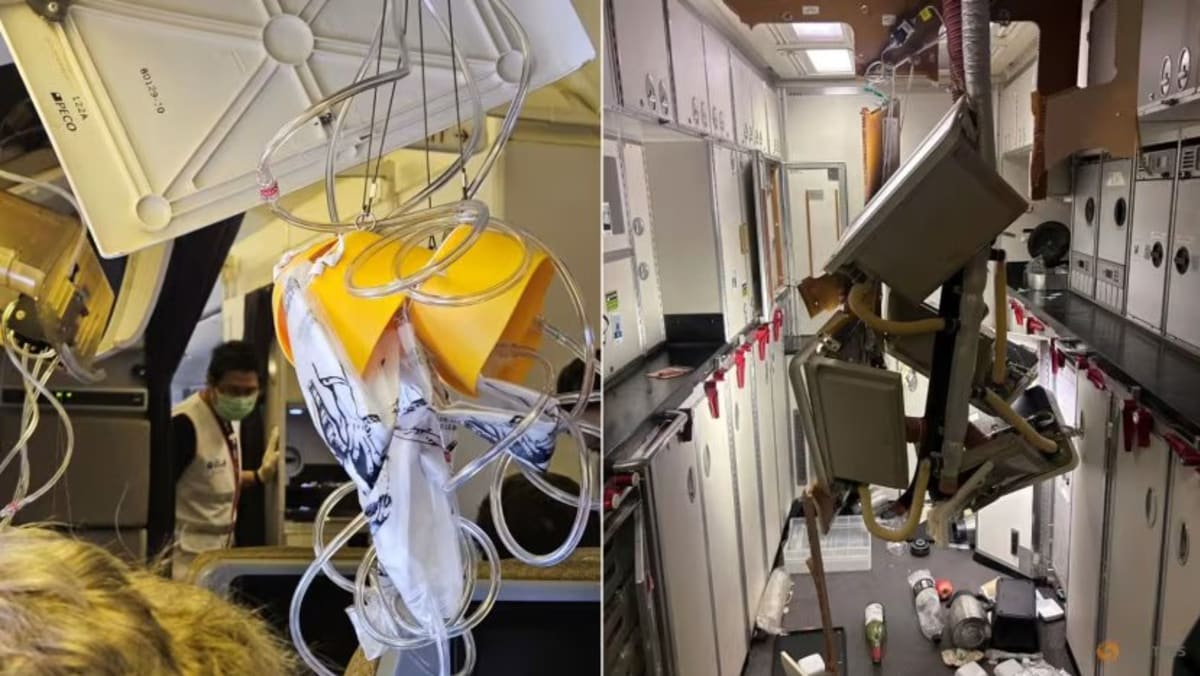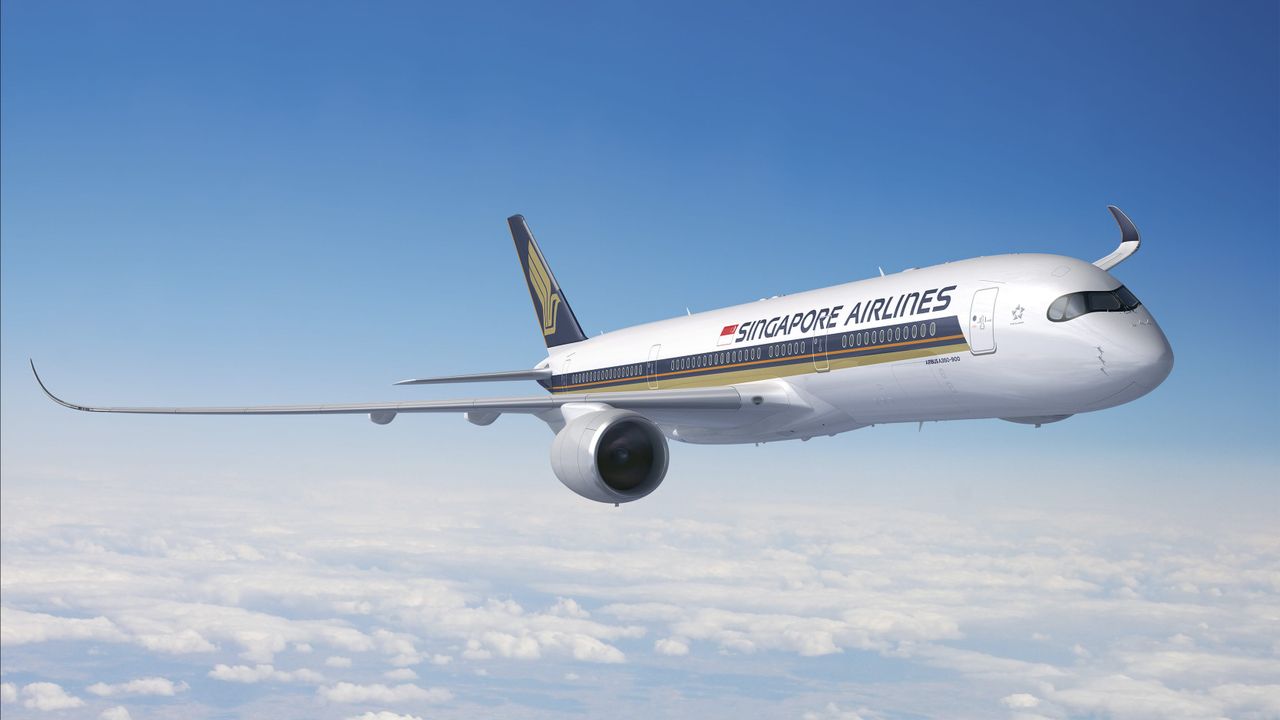Turbulence Incidents Involving Singapore Airlines Flights: Singapore Airlines Flight Turbulence

Singapore Airlines (SIA) has a strong safety record, but it has not been immune to turbulence incidents. In recent years, there have been several notable incidents involving SIA flights, some of which have resulted in injuries to passengers and crew.
In 2015, an SIA flight from Singapore to London was forced to make an emergency landing in Mumbai after experiencing severe turbulence. The incident resulted in several passengers being injured, including one who was seriously hurt.
In 2016, an SIA flight from Singapore to Hong Kong was forced to return to Singapore after experiencing severe turbulence. The incident resulted in several passengers being injured, including one who was seriously hurt.
In 2017, an SIA flight from Singapore to Sydney was forced to make an emergency landing in Perth after experiencing severe turbulence. The incident resulted in several passengers being injured, including one who was seriously hurt.
Safety Measures and Protocols
SIA has implemented a number of safety measures and protocols in response to these incidents. These measures include:
– Installing new weather radar systems on its aircraft
– Providing more training to pilots on how to deal with turbulence
– Developing new procedures for dealing with turbulence
– Working with other airlines to share information about turbulence
SIA is committed to the safety of its passengers and crew, and it is constantly working to improve its safety record. The measures that it has implemented in response to recent turbulence incidents are a testament to its commitment to safety.
Causes and Types of Turbulence Experienced by Singapore Airlines Flights

Singapore airlines flight turbulence – Turbulence is a common phenomenon that affects aircraft during flight. Singapore Airlines flights are no exception, and they can encounter turbulence in various forms and intensities. Understanding the causes and types of turbulence can help pilots and passengers alike to better prepare for and mitigate its effects.
The recent turbulence experienced on Singapore Airlines flights has raised concerns about the safety of air travel. While such incidents are rare, they serve as a reminder of the unpredictable nature of the weather. Just as a tornado in Iowa can wreak havoc on the ground, severe turbulence can disrupt flights in the air.
However, it is important to note that Singapore Airlines has a strong safety record and is committed to ensuring the well-being of its passengers.
Turbulence is primarily caused by meteorological factors, such as changes in wind speed and direction, updrafts and downdrafts, and the presence of atmospheric waves. These factors can create areas of disturbed air that can affect the stability and control of an aircraft.
The recent Singapore Airlines flight turbulence has raised concerns about safety, but the airline has a good safety record. Greenfield, Iowa, is a small town with a population of just over 2,000 people. Greenfield ia map shows that the town is located in the southwestern part of the state, near the Missouri border.
Despite its small size, Greenfield has a rich history and is home to several interesting attractions. The Singapore Airlines flight turbulence incident is a reminder that even the safest airlines can experience unexpected events.
Types of Turbulence
There are several types of turbulence that Singapore Airlines flights may encounter, including:
- Clear-air turbulence (CAT) is a type of turbulence that occurs in clear weather conditions and is not associated with clouds or precipitation. CAT is often caused by wind shear, which is a sudden change in wind speed or direction.
- Convective turbulence is caused by updrafts and downdrafts within clouds. This type of turbulence is often associated with thunderstorms and can be particularly severe.
- Mountain wave turbulence is caused by the interaction of wind with mountain ranges. As wind flows over a mountain, it can create waves of disturbed air that can affect aircraft flying in the area.
Geographical Areas
Singapore Airlines flights are more likely to experience turbulence in certain geographical areas, including:
- The tropics, where convective turbulence is common due to the presence of thunderstorms.
- Mountainous regions, where mountain wave turbulence can occur.
- Areas with strong winds, such as the jet stream, where wind shear can cause clear-air turbulence.
Passenger Experiences and Reactions to Turbulence on Singapore Airlines Flights

Turbulence can be a frightening and unsettling experience for passengers on any airline, and Singapore Airlines is no exception. Passengers who have experienced turbulence on Singapore Airlines flights have reported a wide range of reactions, from mild anxiety to severe fear and panic.
The turbulence experienced on the Singapore Airlines flight was a harrowing ordeal for passengers. The plane lurched and shook violently, causing panic and injuries. The intensity of the turbulence was comparable to the destructive force of a tornado iowa , leaving passengers feeling shaken and traumatized.
Despite the severity of the turbulence, the flight crew remained calm and professional, guiding the plane to a safe landing.
Some of the most common reactions to turbulence include:
- Fear and anxiety
- Nausea and vomiting
- Dizziness and lightheadedness
- Headaches
- Sweating and shaking
- Difficulty breathing
- Confusion and disorientation
In some cases, turbulence can also lead to more serious injuries, such as broken bones, concussions, and internal bleeding. However, these injuries are relatively rare, and most passengers who experience turbulence on Singapore Airlines flights will not be seriously injured.
Strategies and Techniques Employed by Singapore Airlines Cabin Crew, Singapore airlines flight turbulence
The cabin crew on Singapore Airlines flights are trained to assist and reassure passengers during turbulent flights. They use a variety of strategies and techniques to help passengers cope with the experience, including:
- Providing clear and concise information about the turbulence
- Reassuring passengers that the aircraft is safe and that the pilots are in control
- Offering passengers water, blankets, and other amenities to help them relax
- Leading passengers in relaxation exercises
- Providing medical assistance to passengers who are feeling unwell
The cabin crew on Singapore Airlines flights are highly skilled and experienced in dealing with turbulence. They are committed to ensuring that passengers have a safe and comfortable flight, even in the event of unexpected turbulence.
Mitigation and Management of Turbulence by Singapore Airlines
Singapore Airlines takes a proactive approach to mitigating and managing turbulence, ensuring passenger safety and comfort during flights.
To forecast and monitor turbulence, Singapore Airlines employs advanced weather prediction systems and data analysis. These systems gather real-time data from weather stations, satellites, and other aircraft to create detailed turbulence forecasts. Pilots have access to these forecasts and can adjust their flight paths accordingly to avoid or minimize turbulence.
Pilot Training and Protocols
Singapore Airlines pilots undergo rigorous training in turbulence management. They are trained to identify different types of turbulence, assess its severity, and take appropriate action to mitigate its impact on the flight. Pilots are also trained in emergency procedures to handle severe turbulence and ensure passenger safety.
Cabin Crew Training and Protocols
Cabin crew members are also trained to handle turbulence and ensure passenger safety. They are trained to provide clear instructions to passengers, assist with seatbelt fastening, and help passengers remain calm during turbulent conditions.
Aircraft Design and Maintenance
Singapore Airlines operates a modern fleet of aircraft designed to withstand turbulence. The aircraft are equipped with advanced flight control systems that help pilots maintain stability during turbulent conditions. The aircraft are also regularly inspected and maintained to ensure their airworthiness and ability to withstand turbulence.
Communication and Transparency Regarding Turbulence
Effective communication and transparency are crucial in managing passenger expectations and reducing anxiety during turbulence. Singapore Airlines has implemented various strategies to inform passengers about potential turbulence.
Before departure, passengers are provided with pre-flight briefings that include information about the possibility of turbulence. In-flight announcements are made when turbulence is expected, providing updates on its severity and duration. Additionally, the airline’s in-flight entertainment system features a turbulence tracker that provides real-time information on the aircraft’s movements and turbulence intensity.
Effectiveness of Communication Strategies
Singapore Airlines’ communication strategies have been generally effective in managing passenger expectations and reducing anxiety. The pre-flight briefings provide passengers with advance notice of potential turbulence, allowing them to prepare mentally and physically. The in-flight announcements and turbulence tracker offer timely updates, keeping passengers informed and reducing uncertainty.
However, some passengers may still experience anxiety during turbulence, despite the airline’s efforts to communicate and provide information. This is particularly true for passengers with a fear of flying or those who have had previous negative experiences with turbulence.
Recommendations for Improvement
To further improve communication and transparency regarding turbulence, Singapore Airlines could consider the following recommendations:
- Provide more detailed information about turbulence, including its causes, types, and potential severity.
- Offer additional support to passengers who are anxious about flying or have a fear of turbulence.
- Use social media and other channels to proactively communicate information about turbulence and the airline’s safety measures.
- Conduct research to better understand passenger perceptions of turbulence and how communication strategies can be tailored to meet their needs.
The recent turbulence experienced on a Singapore Airlines flight has raised concerns about the safety of air travel. While such incidents can be unnerving, it’s important to remember that they are relatively rare. In fact, the odds of being involved in a plane crash are much lower than the odds of being struck by lightning or winning the lottery.
That said, it’s always a good idea to be prepared for the unexpected, just like the residents of Iowa who recently faced a devastating tornado . Fortunately, the Singapore Airlines flight landed safely, and no one was injured. This serves as a reminder that even in the face of adversity, there is always hope.
The recent Singapore Airlines flight turbulence has raised concerns about air safety. Greenfield, Iowa, is a small town that is home to a large Amish community. The town is located in Adair County, which is known for its rolling hills and scenic countryside.
A greenfield ia map can be helpful for finding your way around the town and its surrounding area. The Singapore Airlines flight turbulence incident is a reminder that even the most experienced pilots can be caught off guard by unexpected weather conditions.